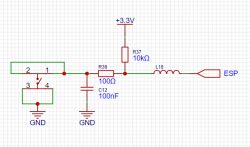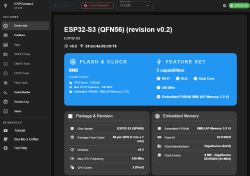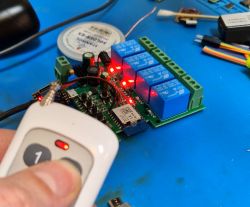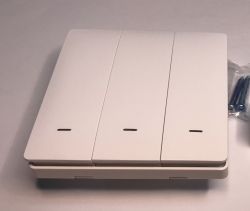Hi,
I am designing an ESP-based device with a fair number of inputs to which micro-switches will be connected. The electronics will be in a plastic enclosure, with a film on top through which the user will push the micro-switches. I want to protect these inputs in a professional manner, so that they are resistant to ESD, for example, if this is the case with the mechanics. I know ESP has some ESD protection, but I still want to add something of my own, as long as it doesn't harm....
Below I am sending a schematic of one button that I made based on information I found on the forum:
1. pull-up to supply voltage
2. capacitor to ground in parallel with the button
3. a 100R resistor to eliminate contact vibration to some extent
4. choke with as little resistance as possible
 .
.
What do you think of such input protection?
I would be very grateful for your help.
Regards M.
I am designing an ESP-based device with a fair number of inputs to which micro-switches will be connected. The electronics will be in a plastic enclosure, with a film on top through which the user will push the micro-switches. I want to protect these inputs in a professional manner, so that they are resistant to ESD, for example, if this is the case with the mechanics. I know ESP has some ESD protection, but I still want to add something of my own, as long as it doesn't harm....
Below I am sending a schematic of one button that I made based on information I found on the forum:
1. pull-up to supply voltage
2. capacitor to ground in parallel with the button
3. a 100R resistor to eliminate contact vibration to some extent
4. choke with as little resistance as possible
 .
.
What do you think of such input protection?
I would be very grateful for your help.
Regards M.






